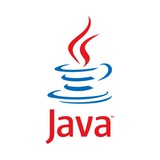tg-me.com/topJavaQuizQuestions/446
Last Update:
Understanding Factory Pattern in Python
Factory Pattern is a powerful design pattern used to create objects in a systematic manner. 🏭 It helps in encapsulating the creation logic of products, making it easier to manage and extend.
Here’s how you can implement it in Python:
1. Create a Product Interface:
All products created will implement this interface.
class Product:
def use(self):
pass
2. Concrete Products:
Define specific products that implement the interface.
class ConcreteProductA(Product):
def use(self):
return "Using Product A"
class ConcreteProductB(Product):
def use(self):
return "Using Product B"
3. Factory Class:
This class will handle the creation of the products.
class Factory:
@staticmethod
def create_product(product_type):
if product_type == 'A':
return ConcreteProductA()
elif product_type == 'B':
return ConcreteProductB()
else:
raise ValueError("Unknown product type")
4. Using the Factory:
You can easily create products without changing code in your main logic.
product = Factory.create_product('A')
print(product.use()) # Output: Using Product A
Using the Factory Pattern not only promotes loose coupling but also enhances code readability and maintainability. Give it a try in your next project! 💡✨
BY Top Java Quiz Questions ☕️
Warning: Undefined variable $i in /var/www/tg-me/post.php on line 283
Share with your friend now:
tg-me.com/topJavaQuizQuestions/446
